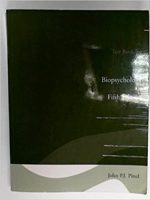Basic Statistics for Business and Economics is a fundamental textbook for students studying statistics in the context of business and economics. The 6th Canadian Edition, authored by Linda, offers a comprehensive guide to statistical theory and its practical applications in real-world scenarios. The book is designed to help students grasp essential statistical concepts and techniques, with a focus on both descriptive and inferential statistics.
**Key Features of the Book:**
– **ISBN-10:** 1259268934
– **ISBN-13:** 978-1259268939
– **Author:** Linda
– **Edition:** 6th Canadian Edition
The textbook follows a student-oriented approach, presenting concepts in a clear and concise manner supported by numerous examples and problems to reinforce understanding. The content covers a range of topics in statistics relevant to business decision-making, making it a valuable resource for students pursuing degrees in business, economics, and related fields.
**About the Authors:**
The authors of this textbook bring a wealth of experience and expertise to the field of statistics and business education. Samuel A. Wathen, Douglas A. Lind, William G. Marchal, and Carol Ann Waite have extensive backgrounds in academia and research, with a focus on statistics, applied mathematics, and business management.
**Chapter 11: Analysis of Variance**
One of the key topics covered in the textbook is Analysis of Variance (ANOVA). This statistical technique is used to compare means across multiple groups and is a valuable tool in business and economics research. The chapter includes multiple-choice questions that test students’ understanding of the F distribution, its properties, and applications.
**FAQs (Frequently Asked Questions):**
**1. What topics are covered in the textbook “Basic Statistics for Business and Economics”?**
– The textbook covers a range of topics in statistics, including descriptive and inferential statistics, probability, hypothesis testing, regression analysis, and more.
**2. Who are the authors of the 6th Canadian Edition of “Basic Statistics for Business and Economics”?**
– The authors of the textbook are Linda, Samuel A. Wathen, Douglas A. Lind, William G. Marchal, and Carol Ann Waite.
**3. How can I access the Test Bank for this textbook?**
– The Test Bank for Basic Statistics for Business and Economics 6th Canadian Edition can be found through online academic resources and educational platforms.
**Conclusion:**
In conclusion, Basic Statistics for Business and Economics is a valuable resource for students seeking a solid foundation in statistical analysis within the context of business and economics. With its clear presentation of concepts, practical examples, and expert authorship, the textbook serves as a comprehensive guide for learners at both introductory and advanced levels of study.
Whether you are a student, educator, or professional looking to enhance your statistical knowledge, this textbook offers a robust framework for understanding key principles and their real-world applications in business and economics.The F Distribution is a fundamental concept in statistics, particularly when performing hypothesis testing to compare variances of two populations. It is essential to understand the characteristics and properties of the F Distribution to apply it correctly in statistical analysis.
### Characteristics of the F Distribution:
1. **Skewness**: The F Distribution is positively skewed, with values ranging from 0 to plus infinity. This skewness indicates the distribution’s asymmetry towards higher values.
2. **Shape**: The curve of the F Distribution is positively skewed, emphasizing the tail towards higher values.
3. **Degrees of Freedom**: Similar to the t-distribution, the type of the F Distribution changes with variations in the degrees of freedom, affecting the distribution’s shape and behavior.
### Key Points to Remember:
1. The test statistic used in Analysis of Variance (ANOVA) is the F statistic.
2. The calculated F value must be equal to or greater than zero.
3. The type of the F Distribution is determined by the degrees of freedom for the F-statistic, with one degree for the numerator and one for the denominator.
By understanding these essential characteristics and properties of the F Distribution, statisticians and researchers can effectively utilize it for hypothesis testing and variance comparison in various research and analysis scenarios.
### FAQ
**Q: What is the F Distribution used for?**
A: The F Distribution is commonly used in statistics to compare variances of two populations or to assess the significance of the difference between means of multiple groups in ANOVA.
**Q: How is the type of F Distribution determined?**
A: The type of F Distribution is determined by the degrees of freedom associated with the F-statistic, with one degree for the numerator and one for the denominator.
**Q: What does a positively skewed F Distribution indicate?**
A: A positively skewed F Distribution suggests an asymmetry towards higher values, with the tail of the distribution extending towards the right.
### Conclusion
In conclusion, the F Distribution plays a crucial role in statistical analysis, especially when comparing variances between two populations. Understanding its characteristics, such as skewness, shape, and relationship with degrees of freedom, is essential for accurate hypothesis testing and inference. By mastering the concepts related to the F Distribution, researchers and statisticians can enhance the quality and reliability of their statistical analyses.










Be the first to review “Basic Statistics for Business and Economics 6Th Canadian Edition By Linda – Test Bank”